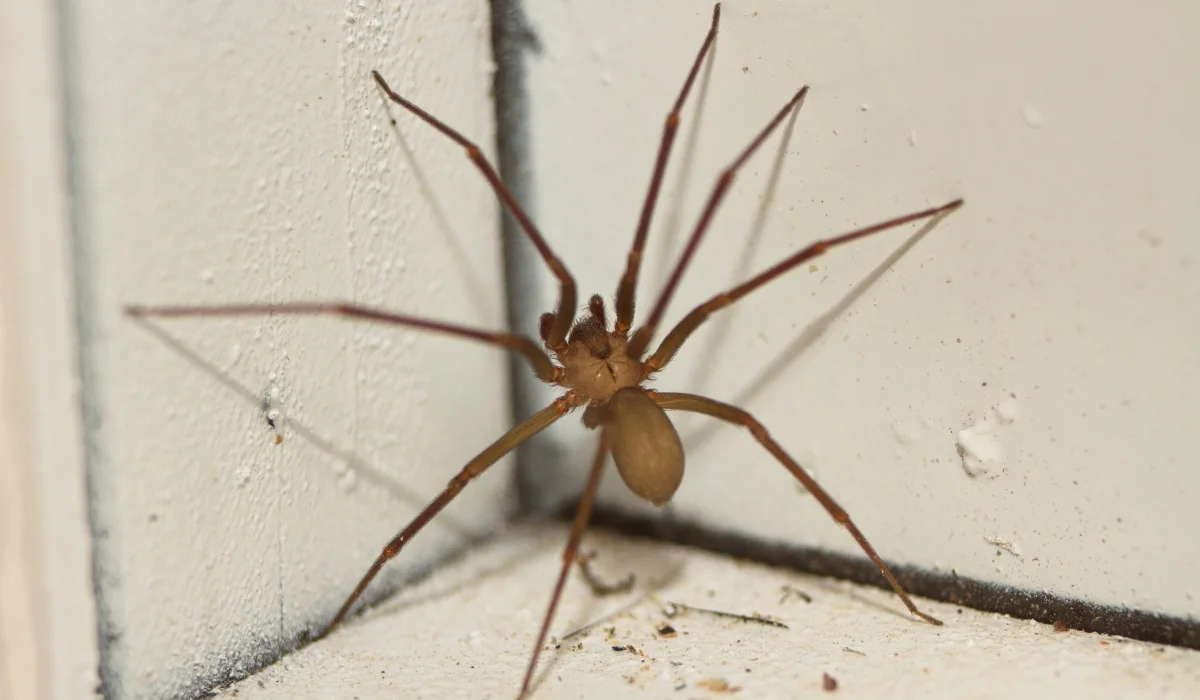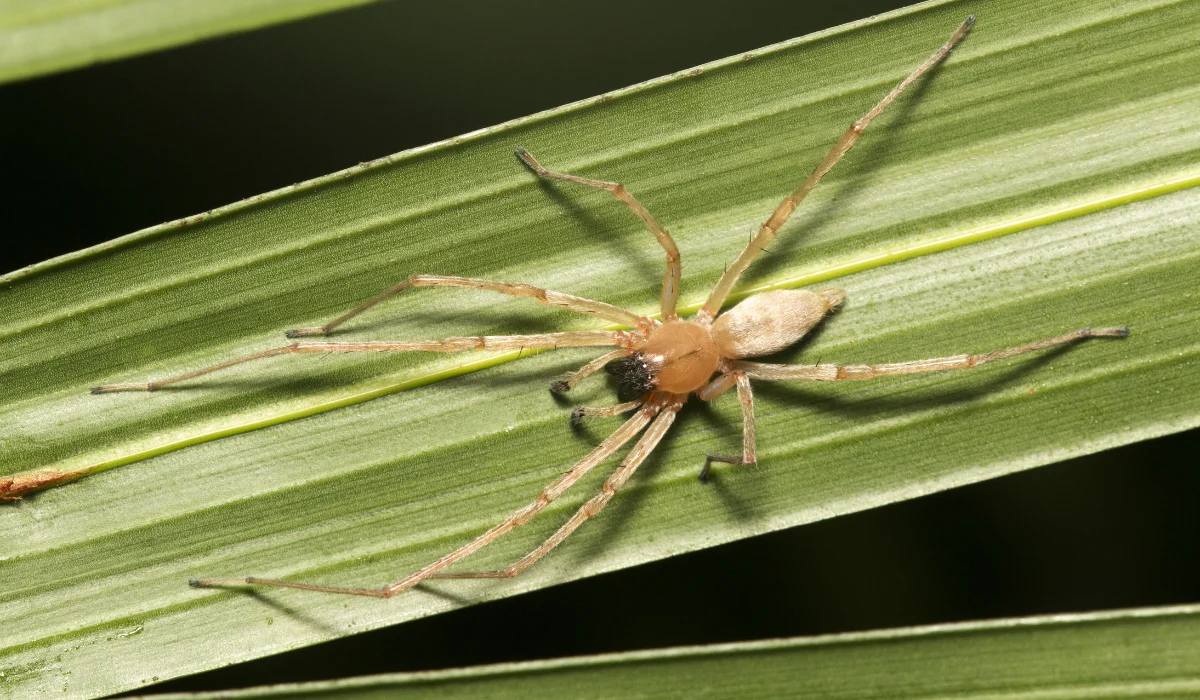Bed bugs are sneaky, biting at night and hiding by day, making them tough to spot. Mistaking them for similar-looking critters like book lice or fleas? Easy mistake. But knowing the real deal is vital for getting rid of them right.
Look for itchy bites and check for these blood-suckers’ unique signs. Spotting the difference saves you a headache, ensuring you tackle the pest problem effectively.
Got an eye on some suspicious bugs? Stick with us to learn how to spot bed bugs like a pro.
Key Takeaways
- Differentiating bed bugs from their look-alikes involves noting specific physical characteristics and habitats, such as bat bugs’ longer hair or spider beetles’ humpbacked bodies.
- Signs of bed bug infestations include shed skin, fecal spots, blood smears on sheets, and unexplained bite patterns on skin.
- Preventing bed bug infestations requires maintaining cleanliness, using natural repellents like essential oils, and inspecting second hand furniture.
- Professional pest control is recommended for severe infestations, including sprays, dusts, and insect growth regulators, to target and eliminate bed bugs effectively.
IDENTIFYING COMMON BED BUG LOOK-ALIKES
Bed bugs in Louisiana have many look-alikes that you can easily confuse them with.
Understanding the subtleties of bed bugs (Cimex lectularius) to other household pests is crucial for accurate identification and appropriate pest management.
Spider Beetles
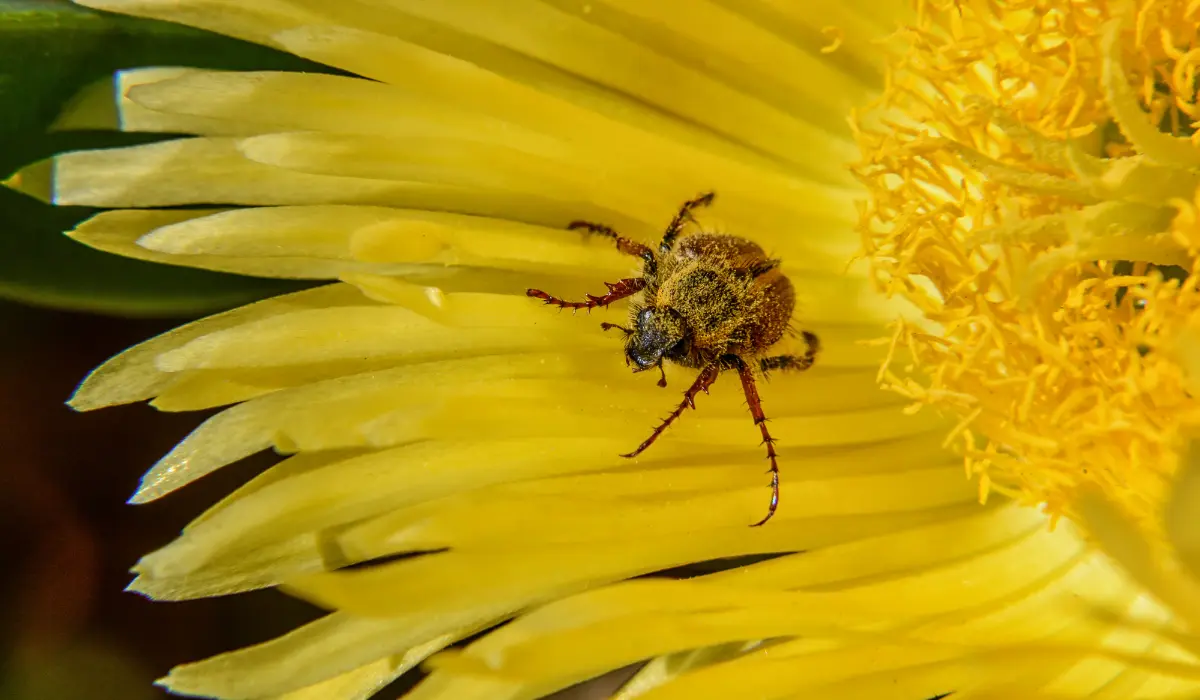
Spider beetles and bed bugs share a reddish-brown hue and oval body, but they differ significantly in these features:
| Feature | Spider Beetle | Bed Bug |
| Shape | Humpbacked body | Flat, oval-shaped body |
| Size | 1.5-3.5 mm | 5-7 mm |
| Antennae | Long and segmented | Shorter, less prominent |
Cockroach Nymphs
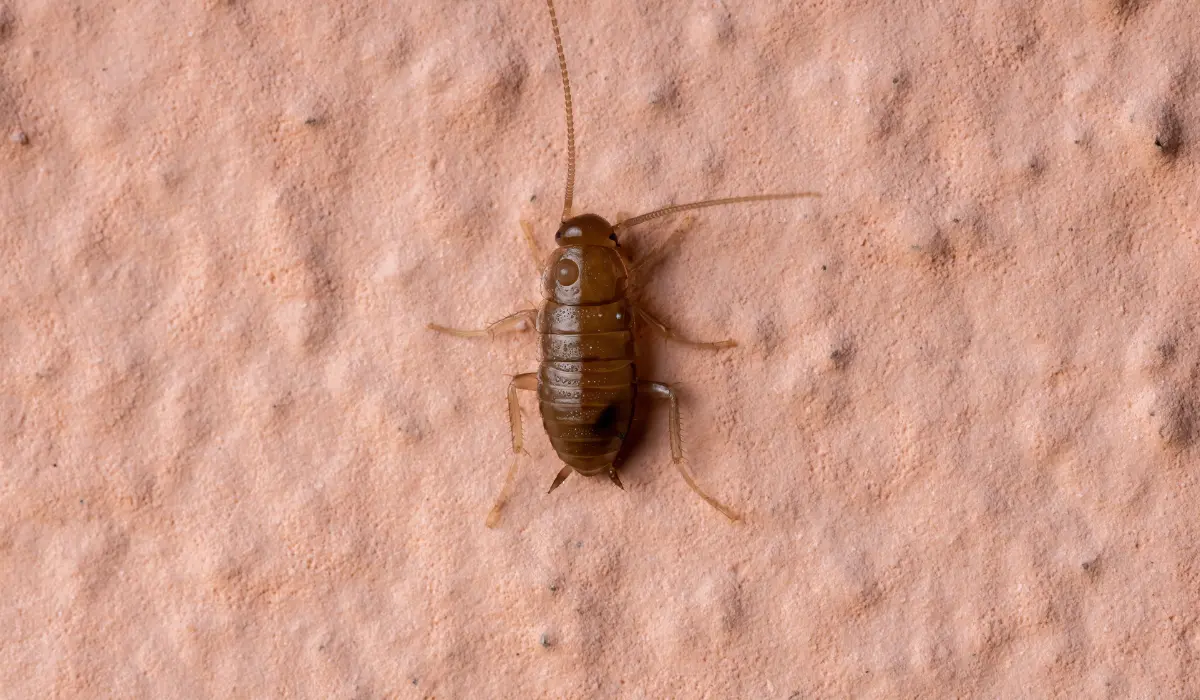
Baby cockroaches, or nymphs, can be mistaken for bed bugs due to their size and dark brown color. Notable differences include:
- Cockroach nymphs are more active during the day than nocturnal bed bugs.
- They prefer different environments; nymphs favor warm, moist areas.
- Nymphs evolve in appearance as they molt.
Carpet Beetles
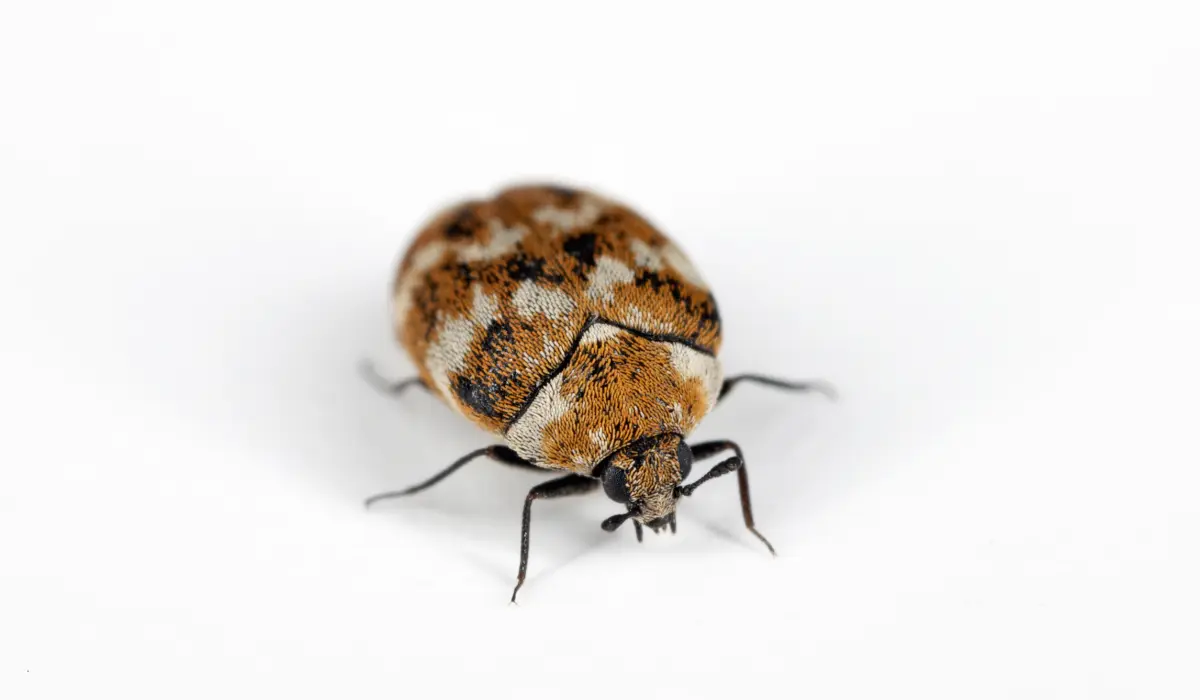
Carpet beetles are often confused with bed bugs but have distinct physical characteristics:
- Lack the flat, apple seed shape of bed bugs.
- Carpet beetle larvae are covered with hair.
- They do not bite humans and are found near natural fibers and cereals.
To confirm whether they are carpet beetles or not, you should:
- Look for beetle larvae
- Check storage areas for beetles
Mites
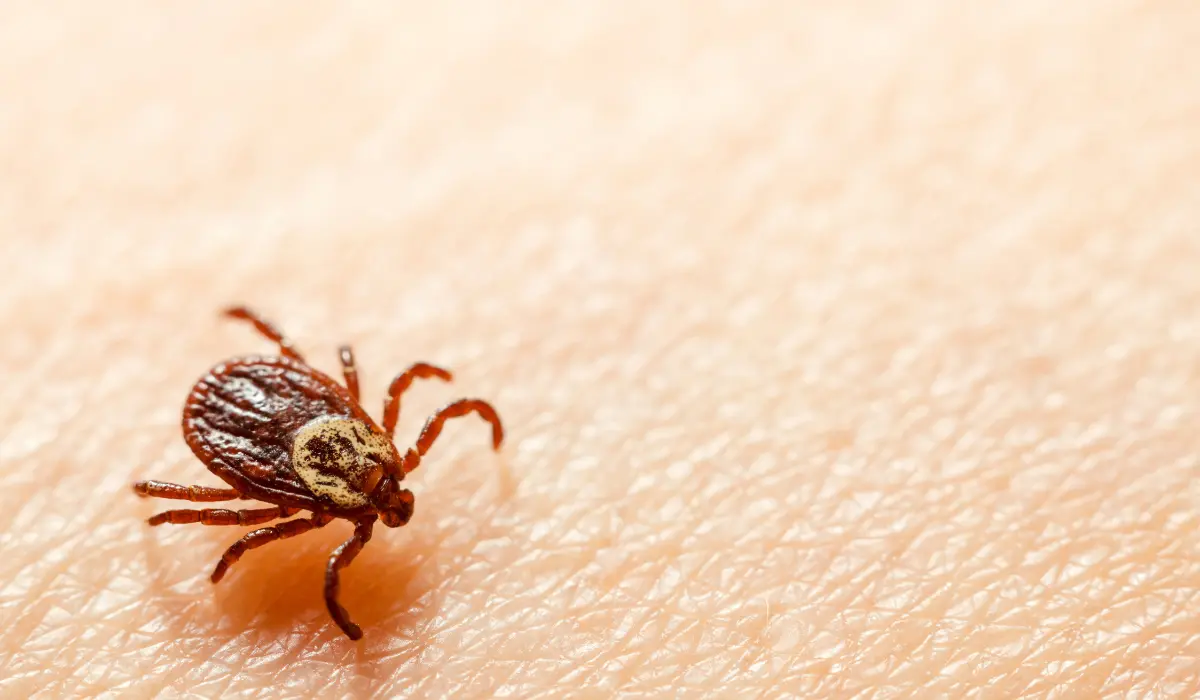
While mites are arachnids, they may often be mistaken for bed bugs in Louisiana:
- Mites are generally smaller than bed bugs and not reddish-brown.
- Unlike bed bugs, dust mites are microscopic and feed on dead skin cells.
- They typically require a magnifying glass or microscope for proper identification.
Head Lice
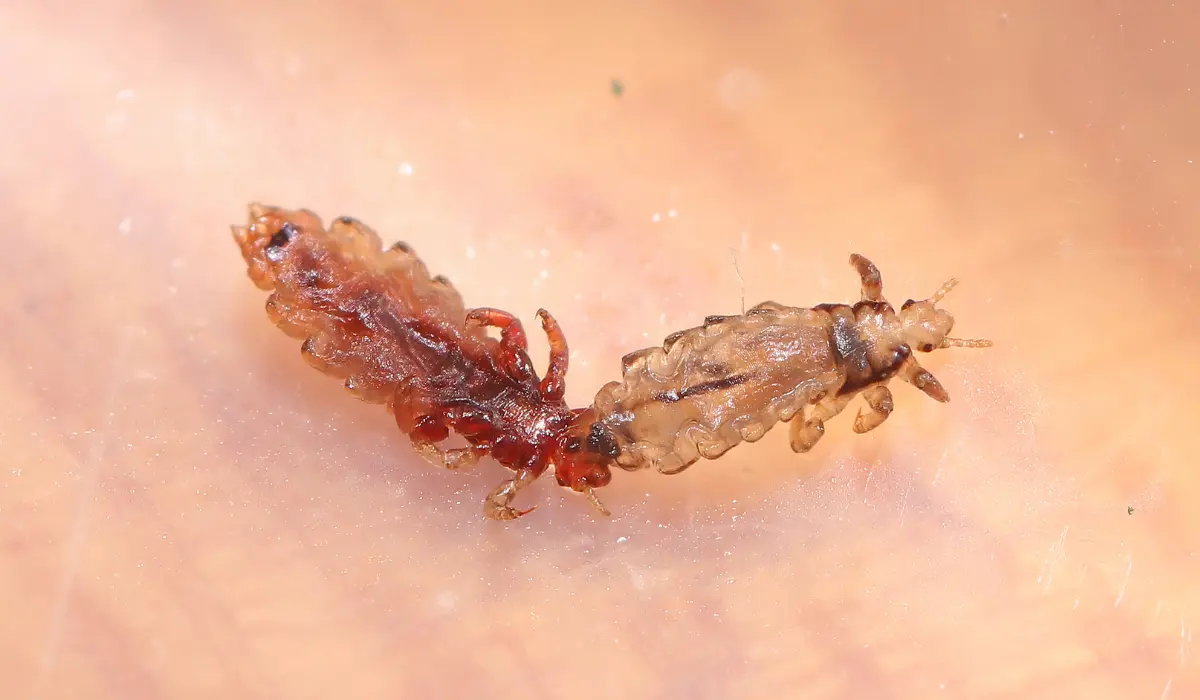
While both are tiny insects, head lice and bed bugs differ notably in preferred habitat and appearance:
| Feature | Head Lice | Bed Bug |
| Habitat | Human Hair | Beds, furniture |
| Size | 2-3 mm | 5-7 mm |
| Shape | Oblong | Broad and oval-shaped |
Swallow Bugs
Since they both have the size of an apple seed, swallow bugs can be mistaken for bed bugs. However, they reveal clear distinctions:
- Swallow bugs are more common around bird nests, especially swallows.
- They are similar in size to bed bugs but have a less broad shape.
- Presence is usually tied to the migration patterns of swallows.
Booklice
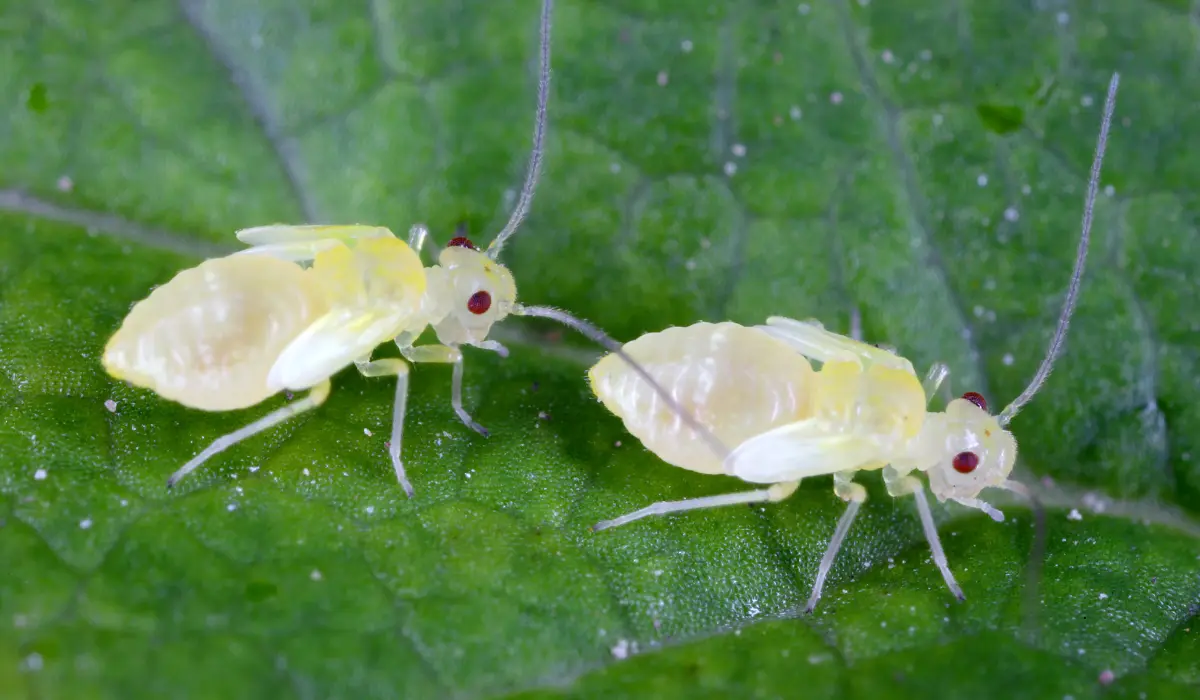
Booklice, or psocids, thrive in high humidity, whereas bed bugs are adaptable to human habitats.
While they resemble bed bugs in size, some are wingless. Here’s how the two tiny insects difference:
| Feature | Booklice | Bed Bug |
| Environment | Prefer damp conditions | Thrive in dry sleeping areas |
| Diet | Feed on mold or fungi | Feed on blood |
| Activity | Often found in old books or papers | Active mostly at night |
SIGNS OF BED BUG INFESTATIONS
Detecting the presence of bed bugs and their look-alike bugs in your home involves a keen eye for their telltale marks.
As homeowners, your knowledge of these signs helps you effectively address infestations if you live in a bed bug-infested city.
Physical Evidence of Pests
Bed bugs feed on human blood and frequently hide close to their food source. When looking for physical evidence of these critters with the naked eye, look for the following:
- Shed Skins: Check for the exoskeletons that bed bug nymphs shed as they grow.
- Fecal Spots: Look for small, dark spots like bed bug feces.
- Blood Smears: Adult bed bugs can leave blood spots on sheets after a blood meal.
- Egg Cases: Tiny, pale bed bug eggs might be hidden in the fabric or in tiny cracks.
PREVENTIVE MEASURES AND HOME REMEDIES
Protecting your home from bed bugs and their look-alike involves targeted strategies.
Maintain Cleanliness
Keeping a home clean prevents unwanted visitors, including termites and roaches. As Louisiana homeowners, your weekly checklist could include:
- Paying close attention to crevices, attics, and baseboards where bugs can hide.
- Vacuuming carpets and furniture, especially around beds, headboards, and box springs.
- Laundering bed linens at least once a week in hot water.
- Decluttering to minimize hiding spots for bugs.
- Inspecting second hand furniture thoroughly before bringing it into the home.
Natural Repellents
Certain essential oils, like lavender and peppermint, can act as natural deterrents for bloodsucking pests. Effective homemade solutions could involve:
- Mix a few drops of essential oil with water in a spray bottle and apply them to critical areas.
- Place cotton balls dabbed with essential oils in drawers or cupboards.
PEST CONTROL COMPANY SOLUTIONS
When all else fails, a professional bed bug control service is the best choice. At LaJaunie’s Pest Control, we provide the following bed bug solutions:
| Treatment Method | Description | Purpose |
| Liquids | Applied to cracks, crevices, and other hiding spots. | To kill bed bugs on contact and provide a residual effect that continues to kill bed bugs. |
| Sprays | Used on mattresses, box springs, and furniture. | To target bed bugs and eggs directly on surfaces where they live and breed. |
| Dusts | Distributed in hard-to-reach areas like electrical outlets and behind baseboards. | To offer long-term control by targeting bed bugs hiding in deep recesses. |
| Insect Growth Regulator (IGR) | Applied during the complimentary two-week follow-up. | To interrupt the bed bug life cycle, preventing future generations from maturing. |
WHEN TO CALL THE BUG EXTERMINATORS
If you’re dealing with bed bug look-alikes like bat bugs, carpet beetles, or spider beetles, you’ll need a different game plan. But whichever pest you face, you should rally the pest control professionals.
Wherever you’re in Louisiana, seeking expert help should be easy. For immediate intervention for a severe infestation, let Lajaunie’s bed bug control specialists tailor a solution that’s right for your home.
For more information about the areas we service, visit our location page.
Related: Lice vs. Bed Bugs: How to Tell the Difference
 By: LaJaunie's Pest Control
By: LaJaunie's Pest Control 

